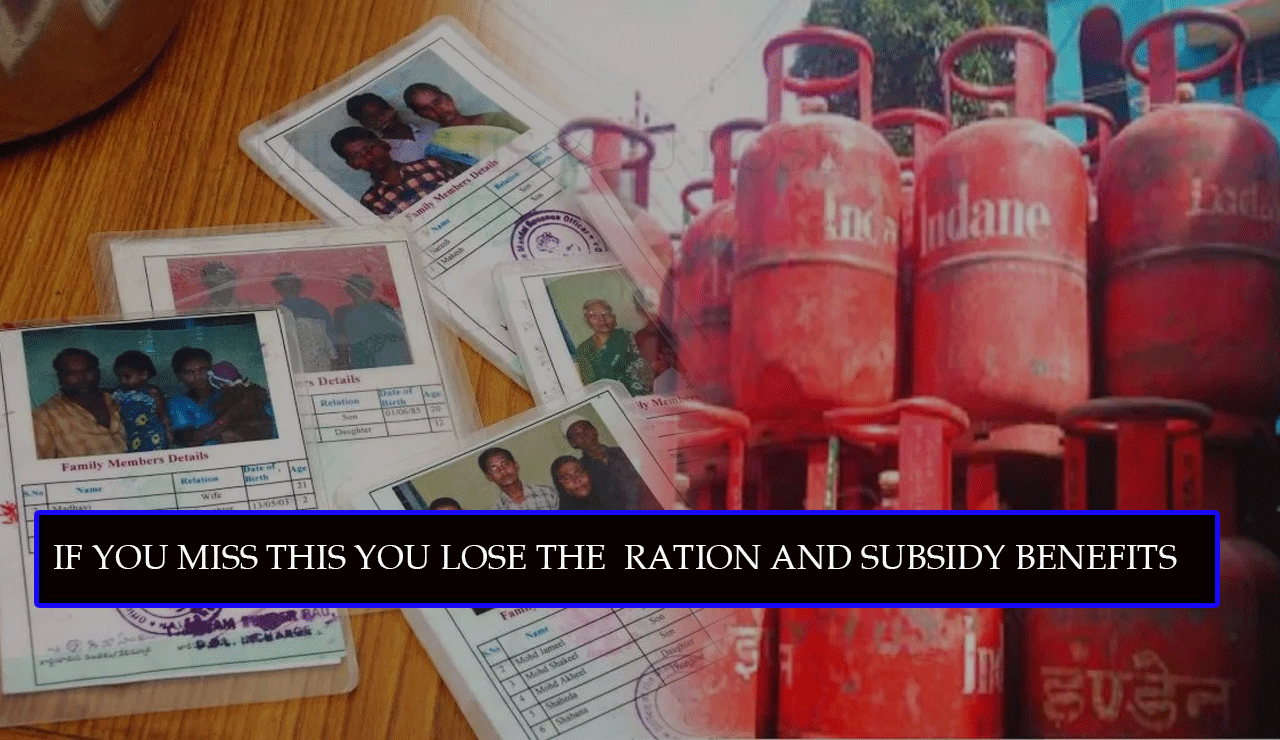Ration Card, Gas Subsidy & Bank Rules Get a Digital Makeover: What You Must Know
The Government of India has announced a sweeping digital transformation of the Public Distribution System (PDS), LPG subsidy framework, and banking regulations.

New Delhi: The Government of India has announced a sweeping digital transformation of the Public Distribution System (PDS), LPG subsidy framework, and banking regulations. These reforms, effective from May 15, 2025, aim to enhance transparency, reduce fraud, and improve delivery of government services across sectors.
Table of Contents
Ration Card Rules Undergo Major Overhaul
To modernize the ration distribution system, the following mandatory requirements have been introduced:
Also Read: Justice for Pahalgam: 80 Terrorists Eliminated in India’s Operation Sindoor
| Requirement | Deadline | Non-Compliance Effect |
|---|---|---|
| Aadhaar Linking | May 15, 2025 | Suspension of benefits |
| Biometric Authentication | Immediate | Inability to collect rations |
| Annual Verification | Yearly | Card may be marked inactive |
| e-KYC Completion | May 15, 2025 | Deletion from database |
Revised Income Eligibility for Ration Cards
| Area | Annual Income Limit | Special Provisions |
|---|---|---|
| Rural Areas | ₹1.20 lakh | Exemptions for widows, senior citizens |
| Urban Areas | ₹1.50 lakh | Exemptions for persons with disabilities |
| Metro Cities | ₹1.80 lakh | Case-by-case evaluation |
All new ration card applications must now be submitted online only, with physical forms no longer accepted at most locations.
One Nation One Ration Card (ONORC) Is Now Mandatory
The ONORC scheme is now fully implemented across India, allowing beneficiaries to collect food grains from any Fair Price Shop (FPS) in the country.
ONORC Key Features:
- Nationwide portability
- Real-time transaction tracking
- Biometric verification
- Standardized entitlements across states
Major Changes to Gas Cylinder Subsidy and Booking
The LPG subsidy framework has been overhauled to improve targeting and transparency:
| Category | Subsidy | Eligibility |
|---|---|---|
| BPL Families | ₹300/cylinder | Aadhaar linked & valid BPL card |
| Middle Income | ₹200/cylinder | Annual income below ₹8 lakh |
| Higher Income | No subsidy | Income above ₹10 lakh |
Booking & Delivery Updates:
- Max 2 cylinders/month; 15/year per household
- KYC and OTP verification required for delivery
- Subsidies via Direct Benefit Transfer (DBT)
Smart LPG Cylinders to Roll Out in Phases
Smart cylinders equipped with:
- Digital chips for tracking
- Leak detection systems
- Tamper-proof features
will first be introduced in urban areas and expand nationwide by December 2025.
New Bank Account Regulations Announced
The Reserve Bank of India (RBI) has also issued new guidelines for account holders:
Mandatory Updates by May 15, 2025:
- Aadhaar Linking
- Mobile Number Updation
- Nominee Registration
By June 30, 2025:
- Address verification for accounts older than 3 years
New Minimum Balance Requirements:
| Account Type | Urban | Semi-Urban | Rural |
|---|---|---|---|
| Savings Regular | ₹2,000 | ₹1,000 | ₹500 |
| Current Account | ₹10,000 | ₹5,000 | ₹3,000 |
| Basic/Salaried | No minimum balance required across regions |
Digital Push Incentives:
- NEFT/RTGS charges reduced
- UPI limit raised to ₹5 lakh
- Mobile banking registration now mandatory
- Annual digital activity now required to retain certain benefits
Who Will Be Affected and How to Prepare
| Group | Impact | Action Needed |
|---|---|---|
| BPL Families | Ration/e-KYC updates | Complete Aadhaar linking and KYC |
| Middle Income Homes | Reduced LPG subsidy, bank charges | Check eligibility and maintain minimum balances |
| Rural Citizens | Digital compliance | Visit CSCs for help with updates |
| Migrant Workers | ONORC portability | Link Aadhaar to ration card & bank account |
| Senior Citizens | Documentation barriers | Utilize govt-organized camps for help |
Rollout Timeline: Key Dates to Remember
- May 15, 2025: Core digital rules go live
- June 30, 2025: Verification deadline for old accounts
- Sept 30, 2025: Smart LPG cylinders phase 1 ends
- Dec 31, 2025: Final deadline for compliance and assistance
Benefits and Challenges of the New System
Benefits:
- Less leakage and corruption
- Faster, digital-first service delivery
- Real-time monitoring and better data
- Increased financial inclusion
